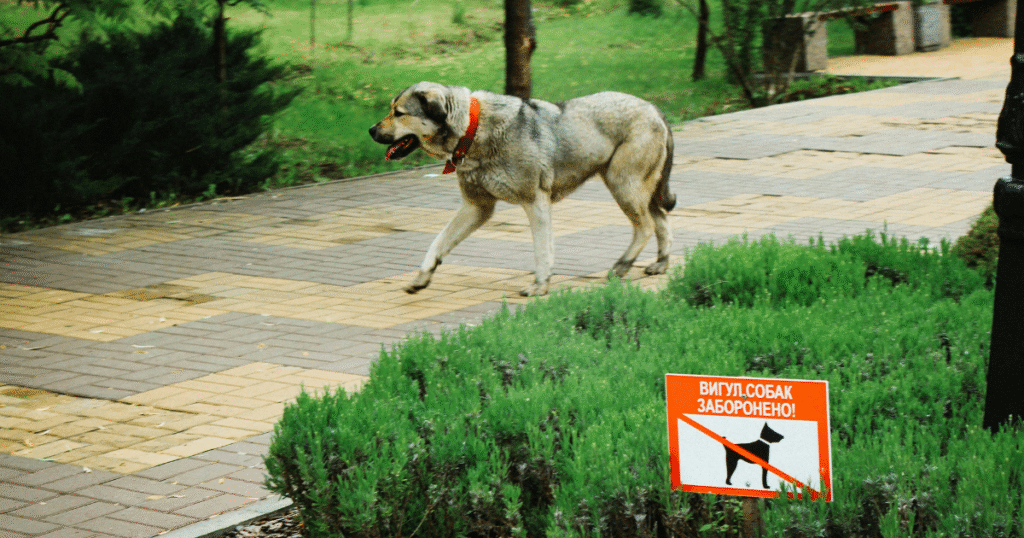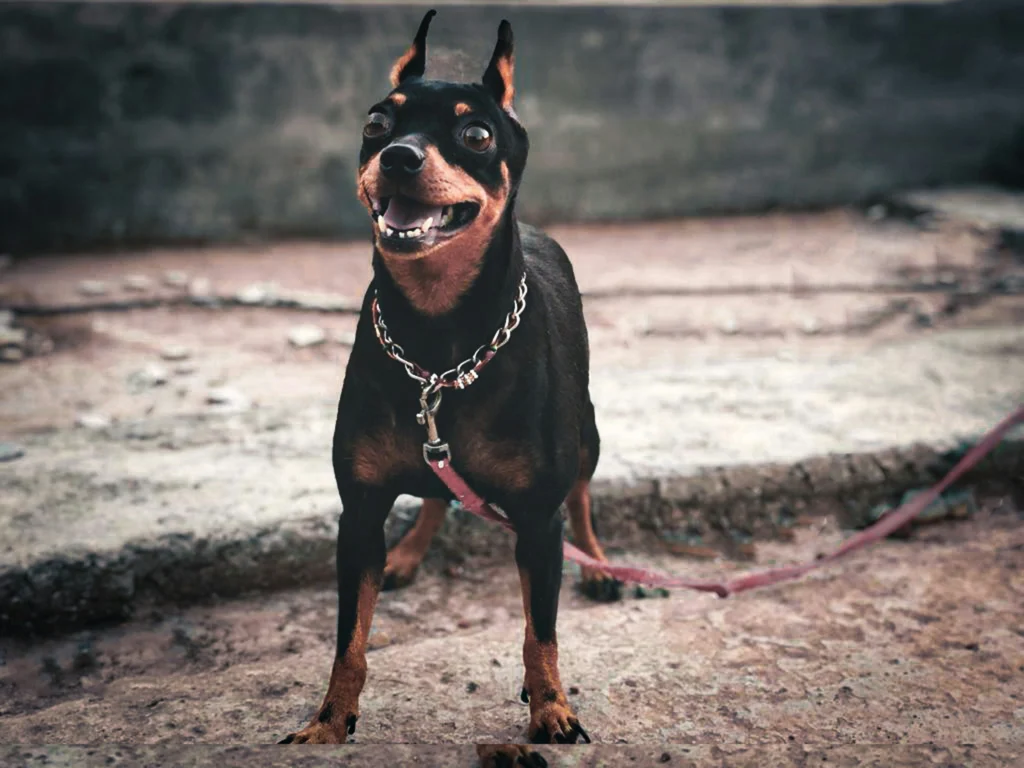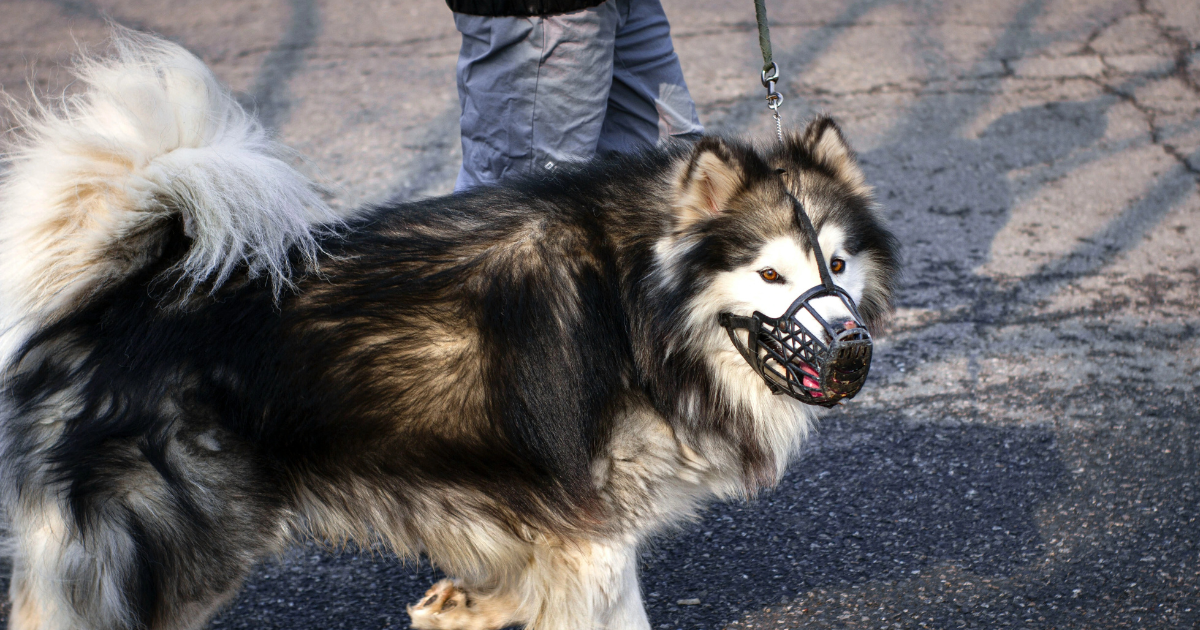Most Dangerous Dog Species: What Makes Them So Risky?
Table of Contents
Some dog breeds are known for being aggressive and unpredictable. This worries dog owners and the public a lot.
Aggressive dog breeds are linked to more human attacks. This is often because of their history, looks, or bad breeding.
What makes some breeds aggressive is complex. It involves genetics, environment, and training.
Knowing why some breeds are lethal canines is key. It helps with responsible dog ownership and stops attacks.
The Science of Canine Aggression
Understanding why dogs get aggressive is complex. It involves looking at both their biology and their environment. This is because aggression in dogs can come from many different places.
Biological Factors Behind Dog Aggression
Biological factors are key in how aggressive a dog can be. Studies have found that genetics can make some breeds more aggressive. For example, dogs bred for guarding or fighting tend to be more aggressive.
Genetic Predisposition
Some dogs are more likely to be aggressive because of their genes. Research has found certain genes linked to aggression in dogs. For instance, Pit Bull Terriers are more aggressive because of their history in bloodsports.
Environmental Influences
How a dog is raised and trained also affects its behavior. Bad socialization, abuse, or training for aggression can make a dog dangerous. It’s important to remember that environment can either help or hurt a dog’s genetic tendencies.
The Nature vs. Nurture Debate
The debate about whether genetics or environment is more important in dog aggression is ongoing. While genetics can set the stage, environment can trigger or stop aggression. Understanding this mix is key to dealing with aggressive dogs.
| Factor | Influence on Aggression | Examples |
|---|---|---|
| Genetic Predisposition | Increases likelihood | Pit Bull Terriers, Rottweilers |
| Environmental Influences | Can trigger or suppress | Poor socialization, abuse, training for aggression |
Most Dangerous Dog Species: A Comprehensive Analysis
Some dog breeds are known for being dangerous in certain situations. This danger often comes from their history, looks, and how they act.
Pit Bull Terriers and Their Reputation
Pit Bull Terriers are often talked about because of their past in dog fighting. They were bred for bull-baiting and are seen as aggressive. But, their behavior can change a lot with training and socialization. Good care can help them not be as aggressive.
Rottweilers: Power and Temperament
Rottweilers are big dogs with a strong guarding instinct. With the right training and socialization, they can be loving pets. But, their size and strength can be a problem if not handled right.
German Shepherds: Working Dogs with Strong Instincts
German Shepherds are smart and often work in police and military jobs. Their strong herding instincts can sometimes look like aggression. But, with the right training, they can be great family pets.
Doberman Pinschers: Guard Dogs by Design
Doberman Pinschers were made to guard and are very loyal. They can look scary, but their behavior depends a lot on their owners. Proper socialization is important to keep them from being too aggressive.
In summary, the most dangerous dog species aren’t naturally aggressive. They are shaped by their surroundings and how they are raised. Knowing about fierce dog breeds and threatening dog varieties can help reduce the risks they pose.
Lesser-Known Dangerous Breeds in America
Many know about popular aggressive dog breeds. But, there are lesser-known breeds in America that are risky. These breeds have traits that can make them dangerous.
Akitas and Their Protective Nature
Akitas are loyal and protective. They come from Japan and were bred to hunt and guard. Their protective instinct can sometimes be seen as aggression. Proper training and socialization are crucial to keep them gentle with their families.
Bullmastiffs: Size and Strength Concerns
Bullmastiffs are big and strong, bred to guard estates. Their size and strength are big concerns. They can overpower someone if they feel threatened. Early training is key to manage their guarding instincts.
Chow Chows: Ancient Breeds with Modern Risks
Chow Chows are ancient and known for being aloof and protective. They can be aggressive if not socialized early. Their strong territorial behavior means owners need to understand canine behavior.
Knowing these breeds’ backgrounds and traits is important to reduce risks. As with any dog, responsible ownership and proper training can lower aggressive behavior chances.
International Perspective: Dangerous Breeds Worldwide
Looking at dangerous dog breeds around the world shows some breeds are seen as especially risky. Their traits and past uses have made them dangerous in many places.
Dogo Argentino: The South American Hunter
The Dogo Argentino comes from Argentina and is known for hunting. It was bred to hunt big game, which makes it strong and fierce. This has raised worries about its safety for the public.
Fila Brasileiro: Brazil’s Protective Giant
The Fila Brasileiro, or Brazilian Mastiff, is big and protective. It was used for tracking and guarding. Its size and fierce nature have led to safety concerns.
Tosa Inu: Japan’s Fighting Dog
The Tosa Inu is from Japan and has a history of dog fighting. Its power and past use have made it a dangerous breed in many places.
Banned Breeds Across Different Countries
Many countries have laws against certain breeds seen as dangerous. For example,
“The UK and Australia have banned the Pit Bull Terrier because of safety concerns.”
How countries deal with dangerous dogs varies. It shows different views on dog ownership and safety.

Recent Fatal Dog Attacks: Statistics and Trends
In 2023, we saw patterns in dog attacks that led to deaths. This study helps us understand why these attacks happen. It also guides us on how to stop them.
2023 Incident Reports and Analysis
In 2023, dog attacks that killed people showed some trends. Pit Bull Terriers were often involved in these cases.
Demographic Patterns in Attack Victims
Children are often the victims of fatal dog attacks. The data shows that young children are more at risk. This is because they are less able to safely interact with dogs.
Regional Distribution of Serious Dog Attacks
Some states have more fatal dog attacks than others. This is often true for states with big populations or loose dog laws.
| State | Number of Fatal Dog Attacks (2023) | Most Common Breed Involved |
|---|---|---|
| California | 15 | Pit Bull Terrier |
| Texas | 12 | Pit Bull Terrier |
| Florida | 10 | Rottweiler |
A dog behavior expert says, “Knowing the facts about dog attacks is key to stopping them.” This shows why we need to keep studying and analyzing data to tackle fatal dog attacks.
Physical Traits That Increase Risk Factors
Some dog breeds have physical traits that make them more dangerous. These traits are important when we think about a dog’s risk.
Jaw Strength and Bite Force Measurements
Jaw strength and bite force are key factors. Dogs with stronger bites can cause more harm. For example, Pit Bull Terriers and Rottweilers have very powerful jaws.
| Breed | Bite Force (PSI) |
|---|---|
| Pit Bull Terrier | 235 |
| Rottweiler | 328 |
| German Shepherd | 238 |
Size, Weight, and Muscle Mass Considerations
A dog’s size, weight, and muscle mass also matter. Larger, more muscular dogs can overpower people. Bullmastiffs and Dogo Argentino are examples of lethal canines because of their size and strength.
Speed and Agility in Attack Scenarios
Speed and agility are also important. Dogs that are fast and agile are harder to defend against. This makes some breeds, seen as harmful pet dogs, risky in certain situations.
In summary, a dog’s physical traits like jaw strength, size, weight, muscle, speed, and agility all affect its risk. Knowing these traits helps us understand the dangers some breeds pose.
Behavioral Triggers for Canine Aggression
Canine aggression is a complex issue. It’s influenced by various triggers that can make a dog aggressive. Knowing these triggers is crucial for safety and preventing dog attacks.
Territorial and Protective Instincts
Dogs may become aggressive when they feel their territory or family is threatened. This is a natural behavior for many breeds, especially guarding ones. Territorial and protective instincts make dogs defensive and aggressive when they see an intruder.
Prey Drive and Predatory Behavior
Some dogs have a strong prey drive, wanting to chase and catch. This can be misdirected towards humans or other animals, leading to aggression. Breeds with high prey drive need careful management and training to prevent aggressive behavior.
Fear-Based and Defensive Aggression
Fear is a big trigger for canine aggression. Dogs that are fearful or anxious may become aggressive as a defense. This is common in dogs that are not well-socialized or have had negative experiences.
Resource Guarding Behaviors
Resource guarding is when dogs become aggressive over their resources, like food or toys. This behavior can escalate into aggression if the dog feels it needs to protect its resources from threats.
| Trigger | Description | Potential Outcome |
|---|---|---|
| Territorial Instincts | Dogs defend their territory and family. | Defensive Aggression |
| Prey Drive | Instinct to chase and catch. | Predatory Behavior |
| Fear-Based Triggers | Fear or anxiety leads to aggression. | Defensive Aggression |
| Resource Guarding | Protecting food, toys, or attention. | Aggression towards perceived threats |
Understanding these triggers is key to managing and preventing canine aggression. By recognizing the signs and addressing the root causes, dog owners and caregivers can take steps to mitigate the risk of aggressive behavior.
The Critical Role of Training and Socialization
Training and socialization are key to preventing aggression in dogs. A dog’s behavior is shaped by its environment and upbringing, not just its breed.
Early Socialization Impact on Aggression
Early socialization is vital for a dog’s behavior. It introduces them to different people, animals, and places. This helps prevent aggression caused by fear. Socialization should start between 8 and 11 weeks of age and continue as they grow.
Professional Training Benefits and Methods
Professional training has many benefits. It teaches obedience, reduces aggression, and strengthens the bond between dog and owner. Positive reinforcement training methods work well because they reward good behavior without causing fear or aggression.

Rehabilitation Possibilities for Aggressive Dogs
Rehabilitating aggressive dogs is tough but doable. It requires understanding why they are aggressive and using the right techniques to change their behavior.
Behavior Modification Techniques
Techniques like desensitization and counterconditioning help dogs react less aggressively to triggers. Consistency and patience are crucial in this process.
Success Rates and Limitations
Rehabilitation can work, but success depends on the dog’s past and how severe their aggression is. Some dogs may need ongoing management.
| Training Aspect | Description | Benefits |
|---|---|---|
| Early Socialization | Exposure to various environments and stimuli | Reduces fear-based aggression |
| Professional Training | Structured training programs | Improves obedience and reduces aggression |
| Rehabilitation | Addressing root causes of aggression | Potential for reducing aggressive behavior |
Breed-Specific Legislation in the United States
As worries about dog attacks rise, breed-specific laws have become a common solution. Yet, their success is still up for debate. These laws aim to ban or limit certain dog breeds seen as dangerous or aggressive.
States and Cities with Active Breed Bans
In the US, many places have put in place breed-specific bans or restrictions. For example, some areas have banned Pit Bull Terriers. This is because of their link to dog fighting and past attack incidents.
| State/City | Banned/Restricted Breeds |
|---|---|
| Denver, CO | Pit Bull Terriers |
| Miami-Dade County, FL | Pit Bull Terriers, American Staffordshire Terriers |
| Ohio (certain cities) | Various breeds, including Pit Bulls |
Effectiveness of BSL: What the Data Shows
Research on BSL shows mixed results. Some studies say it can lower dog attack rates. Others claim it doesn’t solve the problem of dog aggression.
Key findings include:
- A study found that cities with BSL saw a reduction in dog bite incidents.
- Other research indicates that BSL may not be effective without comprehensive dog control policies.
Opposition Arguments and Alternative Approaches
Those against BSL say it unfairly targets certain breeds. They argue it doesn’t address the issue of irresponsible dog owners. Instead, they suggest laws that focus on responsible pet ownership. These laws put the onus on the owner, not the breed.
Recent Changes in Legislation
In recent years, there have been changes in BSL laws. Some places have removed or softened breed-specific bans. They’re moving towards more inclusive dog control policies.
Owner Responsibility and Legal Consequences
As a dog owner, it’s important to know the legal issues of owning a dangerous breed. It’s not just about caring for your dog. You must also understand the legal side of dog ownership, especially for dangerous dogs.
Criminal and Civil Liability After Attacks
If your dog attacks someone, you could face legal trouble. Criminal liability means you might be charged with laws against owning dangerous dogs. Civil liability means you could be sued for damages by the victim or their family.
Depending on the laws in your area, owning a dangerous dog can lead to fines or even jail time. Civil lawsuits can also cost you a lot of money.
Insurance Implications for Dangerous Breed Owners
Insurance can be a big issue for owners of dangerous breeds. Many insurance companies don’t cover these breeds or charge more. You might need to pay extra for insurance or find it hard to get.
| Insurance Aspect | Standard Policy | High-Risk Breeds Policy |
|---|---|---|
| Liability Coverage | $100,000 | $500,000 or more |
| Premium Cost | Average | Higher |
| Exclusions | Few | Specific breed exclusions |
Responsible Ownership Practices and Prevention
To prevent dog attacks, you need to be a responsible owner. This means training, socializing, and keeping your dog under control. Knowing your dog’s behavior and taking steps to prevent attacks is key.
Some important practices include:
- Early socialization and training
- Proper restraint and supervision
- Awareness of local laws and regulations
- Spaying or neutering to reduce aggression
By following these practices, you can lower the risk of your dog causing harm. This helps avoid legal problems and keeps your community safer.
Conclusion: Balancing Safety Concerns with Responsible Ownership
Knowing which dogs are the most dangerous is key to keeping everyone safe. We’ve looked at fierce dog breeds and their risks. This helps us understand the dangers they pose.
Training and socializing dogs is very important. It helps prevent aggression. Owners can make their dogs safe and friendly by understanding what makes them aggressive.
Breed-specific laws and responsible dog ownership are vital. They help manage the dangers some dogs can bring. With education, training, and care, we can lower these risks.
Creating a culture of responsible dog ownership is essential. It ensures safety for both humans and dogs. By knowing the risks and taking steps to reduce them, we can make our environment safer for all.
FAQ
What are the most aggressive dog breeds?
Pit Bull Terriers, Rottweilers, German Shepherds, and Doberman Pinschers are known for being aggressive. Their physical traits and past uses make them a danger.
Are certain dog breeds inherently aggressive?
Some breeds might be more aggressive, but it’s not just about the breed. Genetics, environment, and how they’re raised play big roles too.
How can I identify potentially aggressive behavior in dogs?
Look for growling, snapping, raised hackles, and avoiding people. These signs mean a dog might feel threatened or defensive.
Can training and socialization prevent aggression in dogs?
Yes, early training and socialization can help. They teach dogs to be calm around people and their surroundings.
What is breed-specific legislation, and is it effective?
Breed-specific legislation (BSL) bans or restricts certain breeds. Some think it helps, while others believe it’s not effective or even harmful.
What are the legal consequences for owning a dangerous dog?
Owning a dangerous dog can lead to fines, jail time, and having to pay the victim. It’s a serious matter.
How do physical traits contribute to a dog’s risk factor?
Traits like jaw strength, size, and muscle mass can make a dog more dangerous. They increase the chance of serious injury in an attack.
What role does owner responsibility play in dog aggression?
Owners are key in preventing dog aggression. Proper care, training, and socialization can help control a dog’s natural instincts and lower attack risks.

